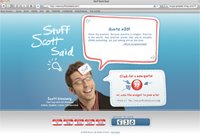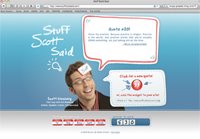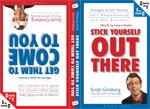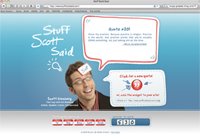 You don’t need more ideas.
You don’t need more ideas.
Especially because:
Your body is tired.
Your brain is overloaded.
Your notebook is already full of new ideas.
The tricky part is translating what you know into action.
BECAUSE THE REALITY IS: You don’t need more intellectual capital – you need more executional velocity.
Here’s how to convert what-you-now-know into what-you-will-do:1. Creativity is only the beginning. What matters is what you convert your creativity into. That’s the distinction: Creativity is a state of being – innovation denotes consistent action. Both are essential, but the latter is what moves things you know into things you do.
It’s like those people you meet who constantly (and aggressively) remind you, “I’m an idea guy!” And you think, “That’s great, Steve, but have you actually executed anything that matters this week?”
Odds are, he hasn’t. And my suggestion is: Stay away from these people. Even if they’re the most creative, artistic geniuses you’ve ever met.
Their unactionable spirit will infiltrate its way into your life and cripple your ability to execute. Do the five people you spend the most time with, ship?
2. Give your ideas some wheels. The two best questions to ask the moment after you learn something are: “Where can I use this?” and, “Now that I have this, what else does this make possible?”
These questions help you pinpoint the movement value of your ideas. And the earlier you identify it, the quicker you can convert what-you-now-know into what-you-will-do.
My suggestion is to write those questions on sticky notes. Keep them in front of your face regularly. This helps drive home the concept of movement value and enhances your awareness of how leverage is the ultimate tool for translating what you know into action. What’s the one question, if asked consistently, would make the biggest impact on your life?
3. Build a philosophy to guide your actions. Take IDEO, for example. At their design and innovation consulting firm, they operate on a core product development philosophy:
“Enlightened trial and error outperforms the planning of flawless intellects.”
This assures that organization doesn’t get too removed from the spirit of action. For me, as a publisher, philosophies like “Don’t be stopped by not knowing how,” and “Finished is the new perfect” guide my daily execution efforts.
Your challenge is to build your philosophy, then memorialize and live it. If everybody did exactly what you said, what would the world look like?
4. Create a lessons-learned manual. If you can’t write about it, you don’t know it. If you don’t write it down, it never happened. And if you can’t find it, you never wrote it down.
Boeing knows this. Their aircraft engineers create lessons learned manual for documenting and sharing wisdom.
Lesson learned: Just because you’ve logged five hundred hours on a simulator doesn’t make you a pilot. You’ve got to get behind the yoke, and you’ve got to share what you learned while you were behind it.
Try this: Keep a stack of index cards by your bed. Write down one lesson learned each night before you hit the sack. At the end of the year, that’s a lot of lessons.
Especially if you’re lucky enough to have a partner your share the bed with. What did you write today?
5. Mobilize your resources. You can’t just man the workbench and crank out a bunch of cool inventions all day. You have to test your ideas, blow a few things up and keep plugging away.
That’s why I love Twitter and Facebook. Perfect venues for testing the waters with new ideas. The only problem is, marketplaces have historically rewarded expertise. And as a result, we’ve been deluded into thinking that being clever is more important than taking action.
Total lie. Out-executing aways trumps out-thinking. Don’t let your mountain of data remain merely an anthology of good intentions that never drive action. Where is your most fertile idea testing ground?
6. Accelerate your actionability. Learning something is irrelevant unless you’re able to silently scream,” I believe this! I can do this! I want to try this!”
To get to that point, consider using the following questions as an audit of actionability:
What are the reasons, barriers, fears, assumptions and blocks that are preventing me people from taking action on this idea – and how can I dispel the myths that will give me the confidence to move now?
What checklist can I create to keep myself accountable and consistent in the future?
What equation, algorithm, formula or system can I create to easily plug myself into?
What is a simple – daily, weekly, monthly, annual, spontaneous – routine that I can discipline myself to do that would reinforce my content?
What jumpstart action items need to be taken in order to build momentum?
What preparatory measures, rituals or practices can I learn that, prior to doing something hard in the future, I can execute to calm my nerves and enable greater success?
What specific phrases, questions or words do I need to add to or delete from lexicon?
7. Making decisions doesn’t mean you’ve done anything. Decisions merely activate the action process. The secret is writing the proper plan to implement the changes in a timely manner. And then, living with consequences – good or bad.
For example, you might try the approach I take with my mentoring clients. At the end of each conversation, refuse to adjourn until they make a list of the first three things they are going to go do immediately after the conversation is over.
This works well with a partner, group – even with yourself. The key is to write it down, put a date on it, and maybe even share it with someone else for accountability purposes.
Anything that activates the driving force. What are you allowing to be an acceptable substitute for action?
REMEMBER: Knowledge that doesn’t lead you to wisdom is nothing but empty calories.
Real wisdom – and real money– comes from doing.
Otherwise you’re just a smart guy who knows a bunch of stuff.
LET ME ASK YA THIS…
Are you turning your ideas into money or into more ideas?
LET ME SUGGEST THIS…
For the list called, “26 Ways to Out Brand the Competition,” send an email to me, and you win the list for free!
* * * *
Scott Ginsberg
That Guy with the Nametag
Author, Speaker, Entrepreneur, Mentor
[email protected]
 Never the same speech twice.
Never the same speech twice.
Always about approachability.
Watch The Nametag Guy in action here!

 “What scares you?”
“What scares you?” Who’s quoting YOU?
Who’s quoting YOU? “What scares you?”
“What scares you?” Who’s quoting YOU?
Who’s quoting YOU? The Seven Dwarfs never had to deal with a recession.
The Seven Dwarfs never had to deal with a recession. The world’s FIRST two-in-one, flip-flop book!
The world’s FIRST two-in-one, flip-flop book! “Is it your place to fix this?”
“Is it your place to fix this?” Who’s quoting YOU?
Who’s quoting YOU? You can’t beat self-employment.
You can’t beat self-employment. “Motion organizes and creates order. It is by motion that all things tend to their equilibrium and find their place in the universe. And unrelenting motion is what helps conspire towards some unifying geometrical situation.”
“Motion organizes and creates order. It is by motion that all things tend to their equilibrium and find their place in the universe. And unrelenting motion is what helps conspire towards some unifying geometrical situation.” For those of you human beings out there (and I think you know who you are) here’s a quick list of assumptions.
For those of you human beings out there (and I think you know who you are) here’s a quick list of assumptions.  Who’s quoting YOU?
Who’s quoting YOU? “If a tree falls in the forest and no one hears it, did it really fall?”
“If a tree falls in the forest and no one hears it, did it really fall?”